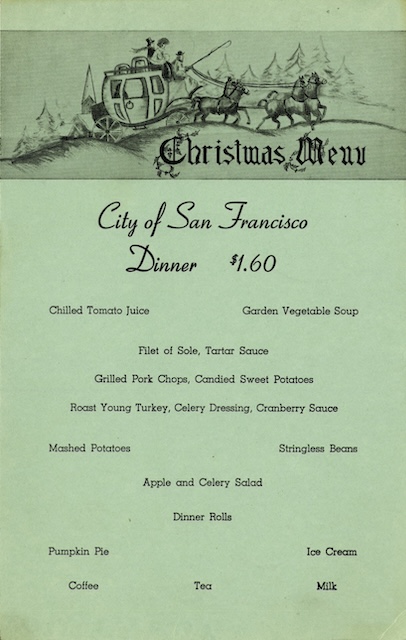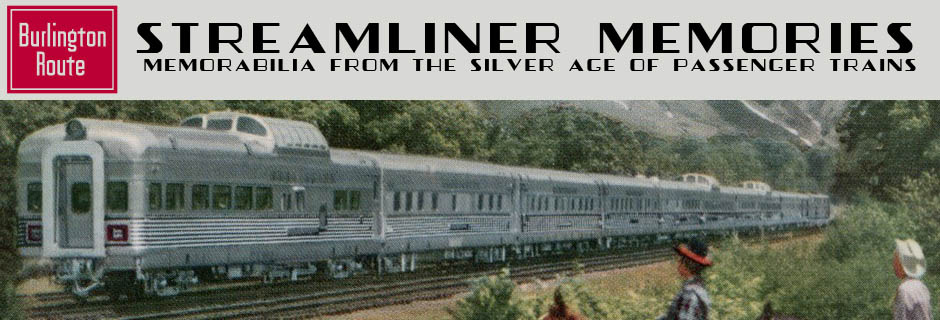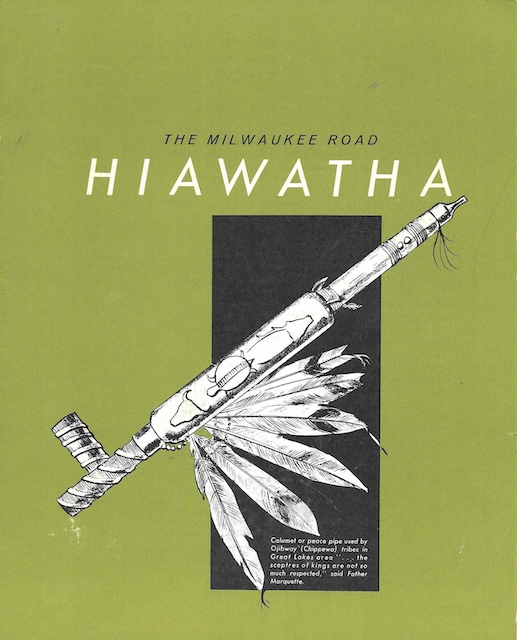We’ve seen Thanksgiving menus aboard UP City trains that only offered the traditional roast turkey as an entrée (but otherwise were very elegant). Here is a City of San Francisco Christmas menu that offers a choice of entrées: sole, pork chops, or roast turkey. However, there are fewer appetizers, vegetables, and desserts.
 Click image to download a 452-KB PDF of this menu.
Click image to download a 452-KB PDF of this menu.
The price of the dinner, regardless of entrée, is $1.60, well below the $3.00 and $3.50 prices on the Thanksgiving menus. Looking at other Union Pacific menus, this would have been the right price for 1947, so I’ve dated it to that year. Continue reading










